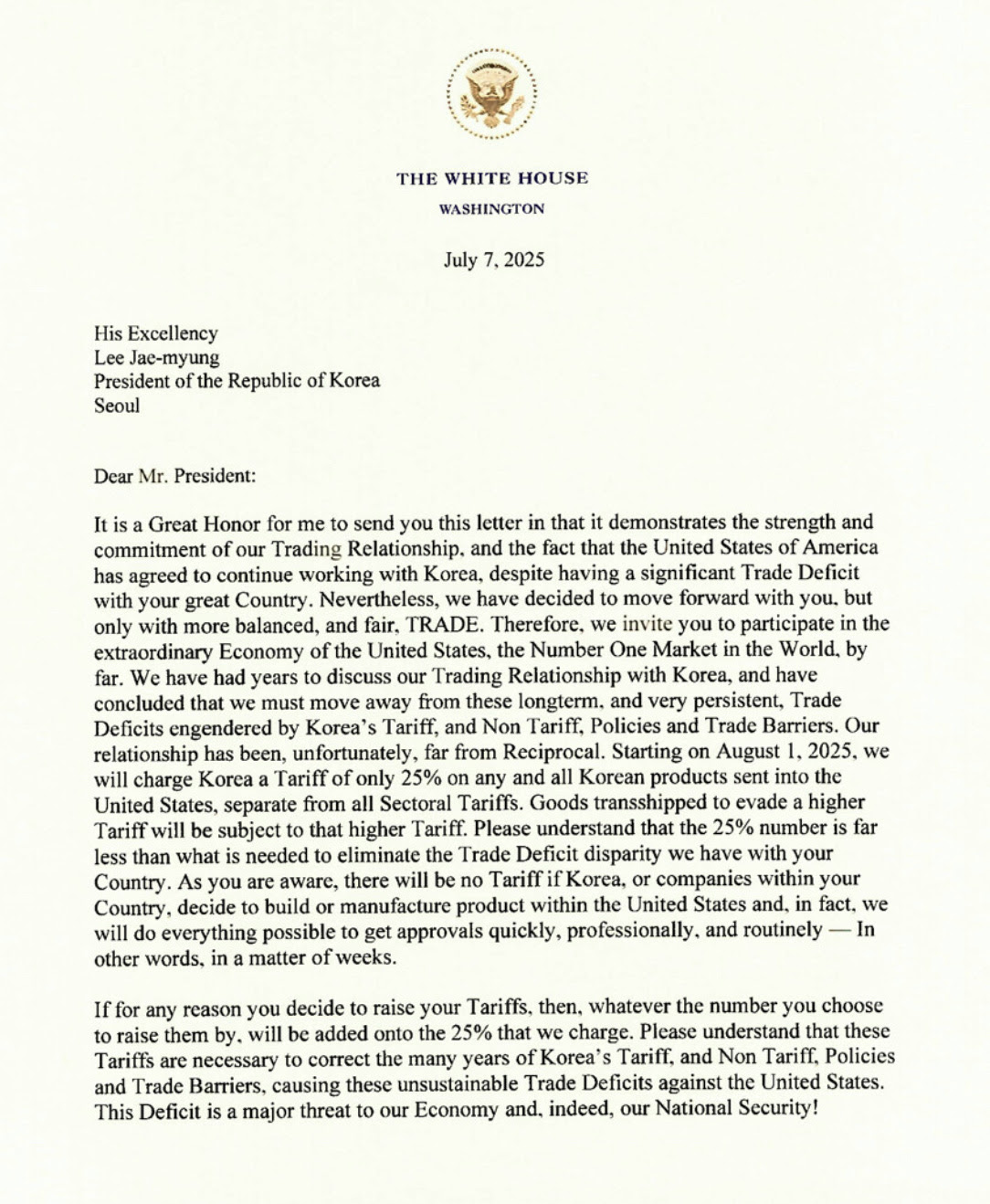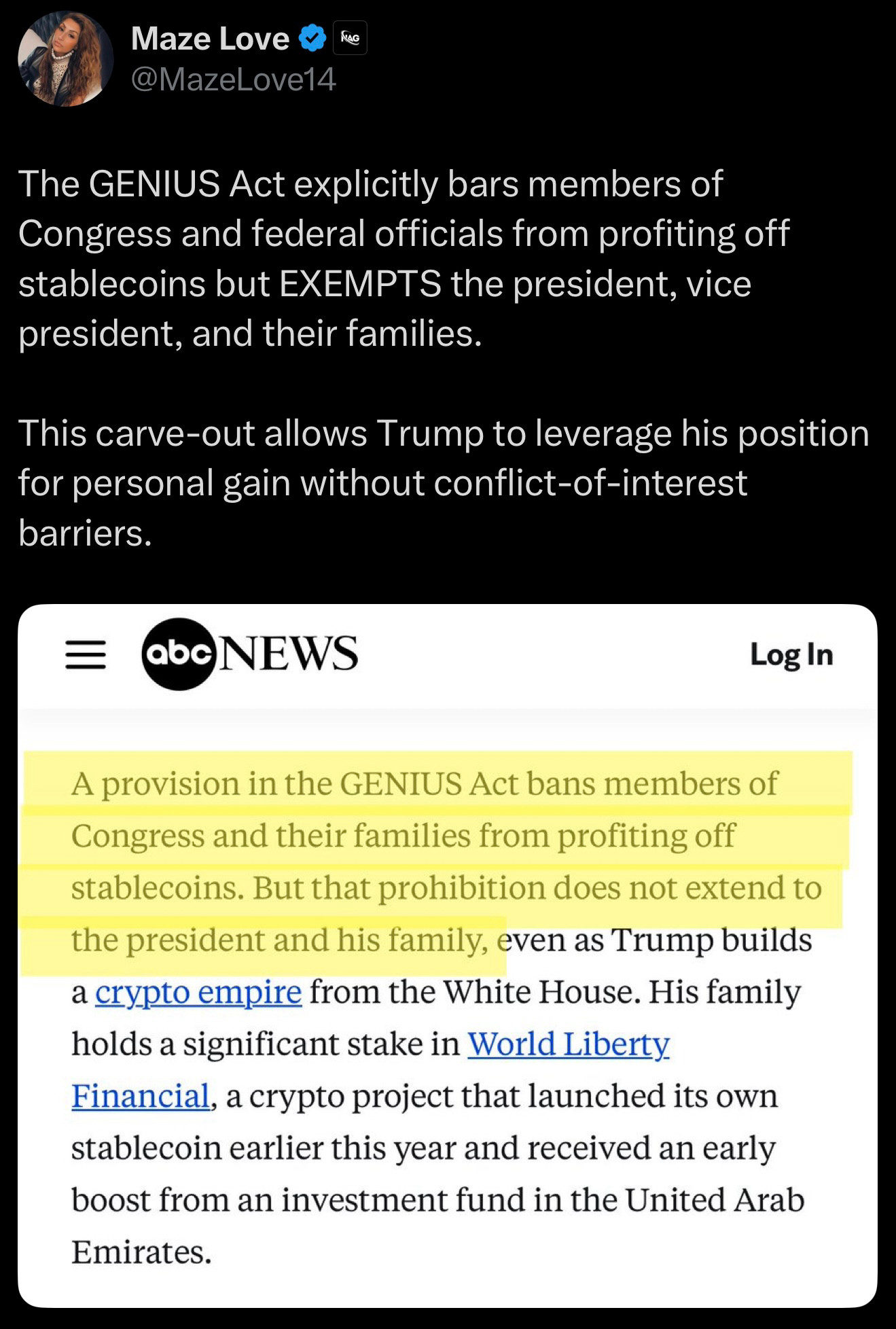Last week, the Bureau of Labor Statistics reported the number of new jobs created in the past month–73,000. The BLS lowered its estimates of new jobs created in the previous two months by 258,000.
The sections of the BLS report that outraged Trump said:
Total nonfarm payroll employment changed little in July (+73,000) and has shown little change
since April, the U.S. Bureau of Labor Statistics (BLS) reported today. The unemployment rate,
at 4.2 percent, also changed little in July. Employment continued to trend up in health care
and in social assistance. Federal government continued to lose jobs...Revisions for May and June were larger than normal. The change in total nonfarm payroll employment
for May was revised down by 125,000, from +144,000 to +19,000, and the change for June was revised
down by 133,000, from +147,000 to +14,000. With these revisions, employment in May and June
combined is 258,000 lower than previously reported. (Monthly revisions result from additional
reports received from businesses and government agencies since the last published estimates and
from the recalculation of seasonal factors.)
Trump was furious. The revisions meant that the labor force grew not by 291,000 new jobs, but by only 33,000 jobs. He insisted that the numbers were “rigged,” and he announced that they had been rigged for political reasons, to make him look bad. He fired the Commissioner of the Bureau of Labor Statistics, Erika McEntarfer, accusing her of chicanery. She had worked for the BLS for 20 years.
The message that was sent to all agencies was that Trump wants only good news. Numerous commentators wondered if any government data could be trusted during Trump’s tenure.
Gene Sperling posted this tweet. Sperling was a senior economic advisor to both President Clinton and President Obama.
@GenebSperling:
For anyone who spends even a split second taking even 1% of the Administration’s explanation for firing the BLS commissioner seriously, read the words of Bill Beach, the former Trump-appointed BLS commissioner:
“These numbers are constructed by hundreds of people. They’re finalized by about 40 people. These 40 people are very professional people who have served under Republicans and Democrats.
And the commissioner does not see these numbers until the Wednesday prior to the release on Friday. By that time, the numbers are completely set into the IT system. They have been programmed. They are simply reported to the commissioner, so the commissioner can on Thursday brief the president’s economic team.
The commissioner doesn’t have any hand or any influence or any way of even knowing the data until they’re completely done. That’s true of the unemployment rate. That’s true of the jobs numbers.”
I was going to post this but then I saw this brilliant article in The New York Times by Peter Baker, the Times‘ chief White House correspondent. He put Trump’s latest effort to control the jobs data into a broad perspective. Trump wants to control the news, the arts and culture, and history. He is a deeply insecure man. He wants the world to believe that he’s the most amazing person who ever lived and superior to all past presidents. Deep down he knows he’s in over his head. He has surrounded himself with sycophants and blocks out any news that disrupts his fantasy of greatness.
In an article titled “Trump’s Efforts to Control Information Echo an Authoritarian Playbook,“ Baker writes:
An old rule in Washington holds that you are entitled to your own opinions but you are not entitled to your own facts. President Trump seems determined to prove that wrong.
Don’t like an intelligence report that contradicts your view? Go after the analysts. Don’t like cost estimates for your tax plan? Invent your own. Don’t like a predecessor’s climate policies? Scrub government websites of underlying data. Don’t like a museum exhibit that cites your impeachments? Delete any mention of them.
Mr. Trump’s war on facts reached new heights on Friday when he angrily fired the Labor Department official in charge of compiling statistics on employment in America because he did not like the latest jobs report showing that the economy isn’t doing as well as he claims it is. Mr. Trump declared that her numbers were “phony.” His proof? It was “my opinion.” And the story he told supposedly proving she was politically biased? It had no basis in fact itself.
The message, however, was unmistakable: Government officials who deal in data now fear they have to toe the line or risk losing their jobs. Career scientists, longtime intelligence analysts and nonpartisan statisticians who serve every president regardless of political party with neutral information on countless matters, such as weather patterns and vaccine efficacy, now face pressure as never before to conform to the alternative reality enforced by the president and his team.
Mr. Trump has never been especially wedded to facts, routinely making up his own numbers, repeating falsehoods and conspiracy theories even after they are debunked and denigrating the very concept of independent fact-checking. But his efforts since reclaiming the White House to make the rest of government adopt his versions of the truth have gone further than in his first term and increasingly remind scholars of the way authoritarian leaders in other countries have sought to control information.
“Democracy can’t realistically exist without reliable epistemic infrastructure,” said Michael Patrick Lynch, author of the recently published “On Truth in Politics” and a professor at the University of Connecticut.
“Anti-democratic, authoritarian leaders know this,” he said. “That is why they will seize every opportunity to control sources of information. As Bacon taught us, knowledge is power. But preventing or controlling access to knowledge is also power.”
The British philosopher Francis Bacon published his meditations on truth and nature more than four centuries before Mr. Trump arrived in Washington, but history is filled with examples of leaders seeking to stifle unwelcome information. The Soviets falsified data to make their economy look stronger than it was. The Chinese have long been suspected of doing the same. Just three years ago, Turkey’s autocratic leader fired his government’s statistics chief after a report documented rocketing inflation.
Mr. Trump’s advisers defended his decision to fire the Labor Department official, saying he was only seeking accuracy, and they released a list of recent job estimates that were later revised. While revisions of job creation estimates are normal, they argued without evidence that recent ones indicated a problem.
The bureau’s “data has been historically inaccurate and led by a totally incompetent individual,” Taylor Rogers, a White House spokesman, said on Saturday. “President Trump believes businesses, households and policymakers deserve accurate data when making major policy decisions, and he will restore America’s trust in this key data.”
Mr. Trump has spent a lifetime trying to impose his facts on others, whether it be claiming that Trump Tower has 10 more floors than it actually has or insisting that he was richer than he actually was. He went so far as to sue the journalist Timothy L. O’Brien for $5 billion for reporting that Mr. Trump’s net worth was less than he maintained it was. The future president testified in that case that he determined his net worth based in part on “my own feelings.” (The suit was dismissed.)
His fast-and-loose approach to numbers and facts finally caught up with him last year when he was found liable for fraud in a civil case in which a judge found that he used his annual financial statements to defraud lenders and ordered him to pay what has now exceeded $500 million with interest. Mr. Trump has appealed the ruling.
During his first term as president, Mr. Trump chastised the National Park Service for not backing up his off-the-top-of-his-head estimate of the crowd size at his inauguration. He used a Sharpie pen to alter a map to argue that he was right to predict that a hurricane might hit Alabama, and federal weather forecasters were rebuked for saying it would not.
Most explosively, he pressured Justice Department officials to falsely declare that the 2020 election was corrupt and therefore stolen from him even after they told him there was no evidence of widespread voter fraud.
This second term, however, has seen Mr. Trump go further to force his facts on the government and get rid of those standing in the way. After just six months of his return to office, the Union of Concerned Scientists, a nonprofit advocacy group, counted 402 of what it called “attacks on federal science,” nearly double its count from the entire first term.
Gretchen T. Goldman, president of the union and a former science adviser to President Joseph R. Biden Jr., said federal agencies like the Bureau of Labor Statistics, whose director was fired by Mr. Trump on Friday, are meant to operate more independently to avoid the politicization of data collection and reporting.
“Firing the top statistical official sends a clear signal to others across the government that you are expected to compromise scientific integrity to appease the president,” she said. “This puts us in dangerous territory far from an accountable and reality-based government.”
Mr. Trump’s team has aggressively sought to steer information emerging from the federal government since January if it contradicted the president. The top aide to Tulsi Gabbard, Mr. Trump’s director of national intelligence, ordered intelligence analysts to rewrite an assessment on the Venezuelan government’s relationship with the gang Tren de Aragua that undermined the president’s claims. Ms. Gabbard later fired two intelligence officialsbecause she said they opposed Mr. Trump.
Mr. Trump and his allies assailed the nonpartisan Congressional Budget Office for projecting that his tax and spending legislation would add trillions of dollars to the national debt and offered his own numbers instead.
“I predict we will do 3, 4, or even 5 times the amount they purposefully ‘allotted’ to us,” he said, referring to growth expected to be stimulated by tax cuts, which he insisted would “cost us no money.” Mr. Trump called the budget office “Democrat inspired and ‘controlled,’” even though it is nonpartisan and Republicans have majorities in both chambers of Congress.
In recent days, Mr. Trump has sought to rewrite the history of the 2016 election when, according to multiple intelligence reports and investigations, including by Republicans, Russia intervened in the campaign with the goal of helping him beat Hillary Clinton. Ms. Gabbard released documents that she claimed showed that in fact President Barack Obama orchestrated a “yearslong coup and treasonous conspiracy” against Mr. Trump, even though the documents she released did not prove that.
Federal officials have gotten the hint. Throughout the government, officials have sought to remove references to topics like “diversity” that might offend Mr. Trump or his team and to revise presentation of history that might in his view cast the country in a negative light. After Mr. Trump ordered the National Park Service to remove or cover up exhibits at its 433 sites across the country that “inappropriately disparage Americans,” employees have flagged displays on slavery, climate change and Native Americans for possible deletion.
Just last week, the Smithsonian Institution confirmed that it had removed Mr. Trump from an exhibit on impeachment at the National Museum of American History, despite the fact that he is the only president to have been impeached twice. The exhibit was changed to say that “only three presidents have seriously faced removal,” referring to Andrew Johnson, Richard M. Nixon and Bill Clinton — with no mention of Mr. Trump.
The Smithsonian, which has been under pressure from Mr. Trump to eliminate “anti-American ideology,” as he put it in an executive order, said in a statement that it had made the change after reviewing the “Limits of Presidential Power” section of the exhibit, which also includes sections on Congress, the Supreme Court and public opinion.
Because the other sections had not been updated since 2008, the Smithsonian said it decided to revert the impeachment section back to its 2008 version, even though it now presents a false account of history. After The Washington Post and other outlets reported about the change, the Smithsonian on Saturday said the exhibit would be “updated in the coming weeks to reflect all impeachment proceedings in our nation’s history.”
The president’s decision to fire Erika McEntarfer, the commissioner of the Bureau of Labor Statistics, came just hours after her office issued its monthly report showing that job growth in July was just half as much as last year’s average. The bureau also revised downward the estimated job creation of the two previous months.
Mr. Trump erupted at the news and ordered her dismissed, claiming on social media that the numbers were “RIGGED in order to make the Republicans, and ME, look bad.” He offered no proof but just said it was “my opinion.”
Both Democrats and Republicans criticized the move, including Mr. Trump’s labor statistics chief in his first term, William W. Beach, who wrote on social media that it was “totally groundless” and “sets a dangerous precedent.”
Speaking with reporters before heading to his New Jersey golf club for the weekend, Mr. Trump asserted bias on the part of Dr. McEntarfer, who was appointed by Mr. Biden and confirmed by a large bipartisan vote in the Senate, including Vice President JD Vance, then a senator. The example Mr. Trump offered as evidence was flatly untrue.
“Days before the election, she came out with these beautiful numbers for Kamala,” Mr. Trump said, referring to his opponent, Vice President Kamala Harris. “Then right after the election — I think on the 15th, Nov. 15 — she had an eight or nine hundred thousand-dollar massive reduction.” What he meant was that the bureau revised downward its estimate of how many jobs had been created by 800,000 or 900,000 only after the election so as not to hurt Ms. Harris’s chances of victory.
Except that it actually happened the exact opposite way. Dr. McEntarfer’s bureau revised the number of jobs created downward by 818,000 in August 2024 — before the election, not after it. And the monthly report her bureau released just days before the election was not helpful to Ms. Harris but instead showed that job creation had stalled. The White House offered no comment when asked about the president’s false account.
“It’s a post-factual world that Trump is looking for, and he’s got these sycophants working for him that don’t challenge him on facts,” said Barbara Comstock, a former Republican congresswoman from Virginia.
But firing the messenger, she said, will not make the economy any better. “The reality is the economy is worse, and he can’t keep saying it’s better,” she said. “Joe Biden learned that; people still experience the experience they have, no matter how much” you tell them otherwise.






